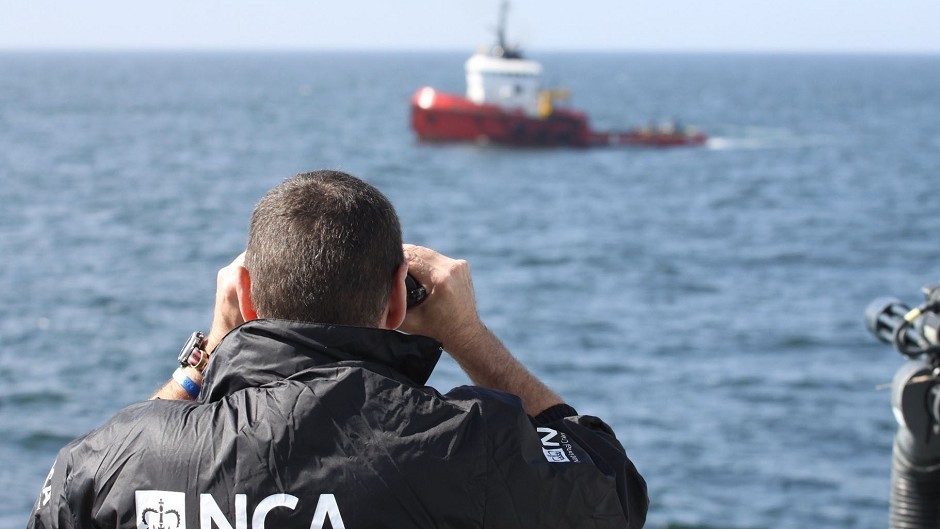A major security operation was mounted yesterday to allow the jurors in a international drug smuggling trial to see 129 bales of cocaine found on a tug.
The street outside the High Court in Glasgow was barricaded to allow the huge haul of the Class A drug to delivered to the building in a van.
The cocaine was discovered on the MV Hamal after it was boarded in international waters 100 miles off Aberdeen in an operation involving a Royal Navy warship and a Border Force cutter.
Border Force officer Lee Butler, 44, told the court that he and other members of a specialist “deep rummage” team searched the tug when in arrived at Aberdeen harbour in April last year.
He said a total of 129 bales of the Class A drug were discovered in a ballast area at the front of the ship.
In a highly unusual move yesterday, the cocaine was brought under tight security to the High Court for the jury to view.
Mart Street outside the court was closed while it was being taken into building in an unmarked van.
The drugs were later returned to a secret location.
Inside the court building, a secure area was set up in the corridor outside Court 3 and the 14 jurors were able to see the Class A drug up close and examine the labels on the bales which measured 2ft by 1ft.
The bales of cocaine covered an area of 12ft by 10ft were piled 4ft high.
Each one was individually sealed in a plastic evidence bag.
In all the jurors spent about 10 minutes looking at the bales in a move described by trial judge Lord Kinclaven as “slightly unusual”.
The jury watched as Mr Butler looked at labels on the bales, while the judge and the prosecutor and defence counsel looked on. Not a word was spoken.
The nine-strong Turkish crew of the MV Hamal are on trial accused of being involved in an international drug-smuggling operation.
They are alleged to have smuggled cocaine from Istanbul via Tenerife to South America, and then to the North Sea between February and April 2015.
They are also accused of being concerned in the supply of the drug between April 21 and 23.
Kayacan Dalgakiran, 64, Mustafa Guven, 48, Mustafa Ceviz, 55, Umit Colakel, 39, Ibrahim Dag, 48, Mumin Sahin, 46, Emin Ozmen, 51, Abdulkadir Cirik, 32, and Muhammet Seckin, 27, deny the charges against them.
The court has heard that the Hamal was boarded by the Royal Navy and Border Force officers in international waters and taken to Aberdeen harbour.
Mr Butler said that one of the first places to be searched was a ballast tank in the front of the ship, which he found suspicious.
He was asked why that was by advocate depute Ashley Edwards, prosecuting, and replied: “I didn’t expect it to contain the liquid it did, which was diesel fuel. It should have contained sea water.”
Mr Butler said that the tank was emptied and he added: “There were a number of pipes which had been cut. There was also some plate that looked like it had recently been welded and the tanks were separated in two.”
He said he was instructed to drill a hole in the plate.
Miss Edwards asked him: “What happened?”
He replied: “There was white powder that appeared on the drill.”
He said the powder was tested and found to be cocaine.
The next day a hole was cut in the steel plate and four bales of the drug were found.
A hatch was then found in one of the cabins which led to an area where more cocaine was discovered.
Mr Butler was asked how many bales there were in total and replied: “There were 129.”
Earlier, Martin Pownall of the Border Force told said the crew of the Hamal did not resist when the tug was boarded at sea.
The trial continues.
